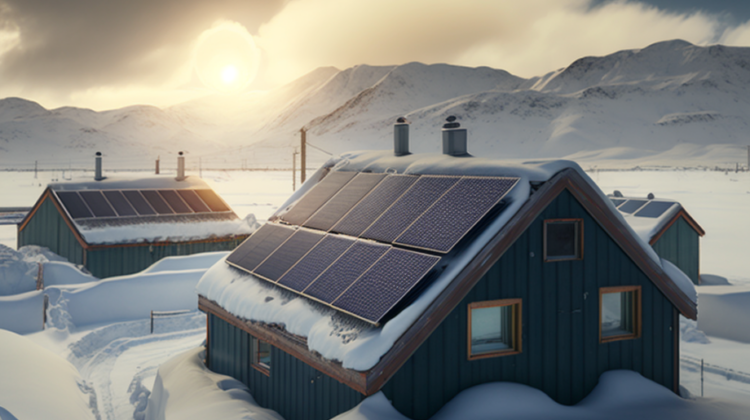
Solar panels are often associated with warm and sunny climates but can be just as effective in cold and snowy regions. Many northern countries like Canada, Norway, and Sweden have seen a surge in the installation of solar panels in recent years.
One of the main concerns people have about using solar panels in cold climates is that the panels will not function as well in low temperatures. While it is true that solar panels operate less efficiently in colder temperatures, this does not mean that they are not effective at all. Solar panels can still generate significant electricity in temperatures as low as -40°C.
Another concern is that snow and ice will cover the solar panels, preventing them from generating electricity. However, this is only sometimes the case. Modern solar panels are designed to be durable and can withstand harsh weather conditions, including heavy snow loads. Additionally, the dark surface of solar panels attracts sunlight and can cause snow to melt and slide off the panels more quickly than other surfaces.
Several steps can be taken to ensure that solar panels operate at their maximum capacity during winter. One of the most effective is to tilt the panels at a steeper angle. This helps to reduce the impact of snow and ice accumulation and improve the angle of incidence of sunlight. Another option is to install a system that automatically removes snow and ice from the panels.
Solar panels in cold climates can offer an advantage in terms of efficiency compared to warmer climates. This is because solar panels operate more effectively in lower temperatures. As the temperature of a solar panel increases, its efficiency decreases, resulting in potentially lower electricity generation in hot climates but greater output in cooler temperatures.
Another advantage of solar panels in cold climates is that energy can be stored more efficiently. This is because colder temperatures reduce the self-discharge rate of batteries, allowing them to retain their charge for extended periods. This is particularly useful during long periods of darkness, such as during the winter months when there are fewer hours of sunlight.
In addition to the environmental benefits of using solar panels, there are also financial benefits. While the upfront costs of installing solar panels may be higher in colder climates due to the additional equipment needed, the savings from reduced energy bills can be significant over time. Additionally, many countries offer incentives for installing solar panels, including tax credits and rebates.
In conclusion, solar panels can be as effective in cold climates as warm temperatures. While there are some challenges to using solar panels in colder regions, such as snow and ice accumulation, several solutions exist to address these challenges. In addition to the environmental benefits of using solar panels, there are also financial benefits that can make them a worthwhile investment for homeowners and businesses. As the world continues to seek cleaner and more sustainable energy sources, solar panels will likely become an increasingly popular option in all regions, including cold climates.

Leave a Reply